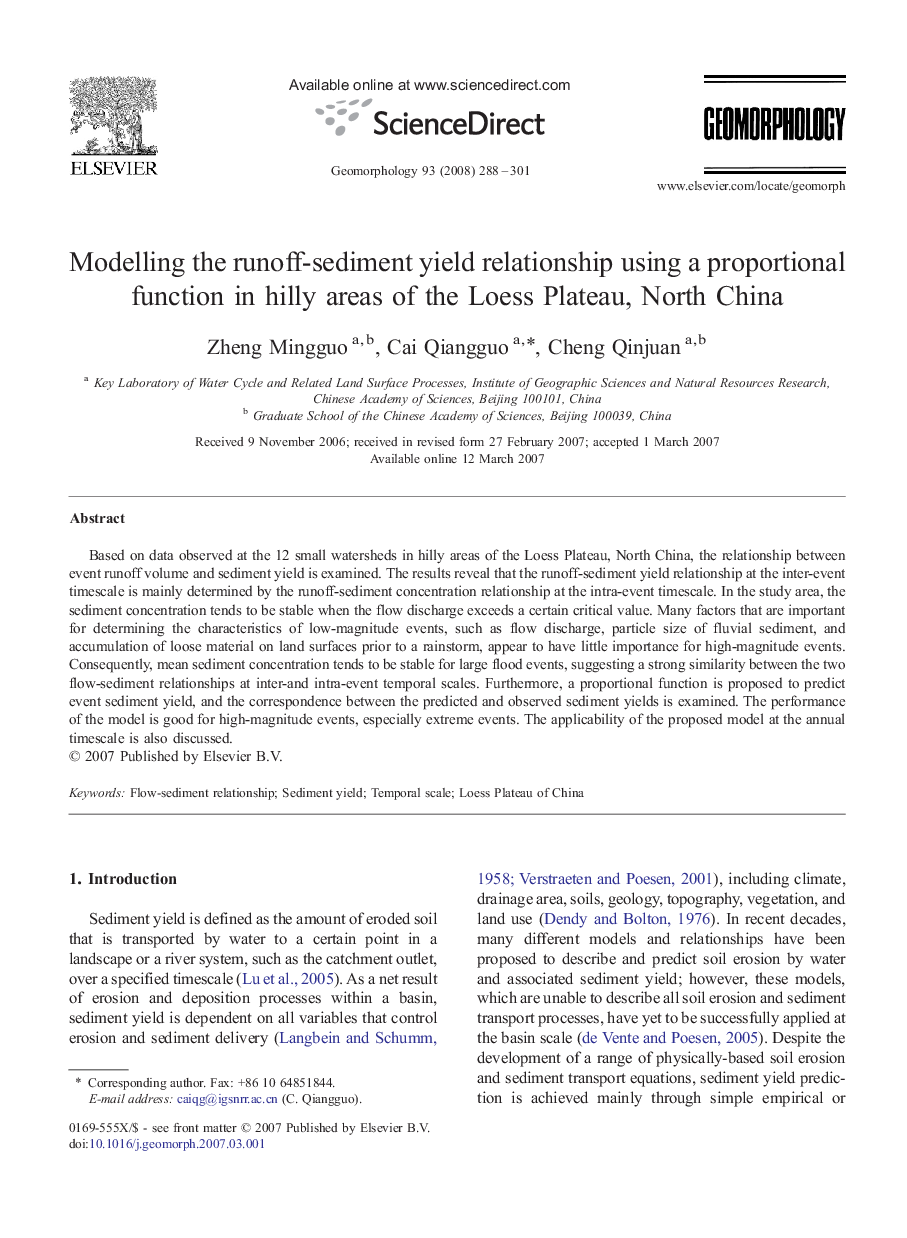| Article ID | Journal | Published Year | Pages | File Type |
|---|---|---|---|---|
| 4686896 | Geomorphology | 2008 | 14 Pages |
Based on data observed at the 12 small watersheds in hilly areas of the Loess Plateau, North China, the relationship between event runoff volume and sediment yield is examined. The results reveal that the runoff-sediment yield relationship at the inter-event timescale is mainly determined by the runoff-sediment concentration relationship at the intra-event timescale. In the study area, the sediment concentration tends to be stable when the flow discharge exceeds a certain critical value. Many factors that are important for determining the characteristics of low-magnitude events, such as flow discharge, particle size of fluvial sediment, and accumulation of loose material on land surfaces prior to a rainstorm, appear to have little importance for high-magnitude events. Consequently, mean sediment concentration tends to be stable for large flood events, suggesting a strong similarity between the two flow-sediment relationships at inter-and intra-event temporal scales. Furthermore, a proportional function is proposed to predict event sediment yield, and the correspondence between the predicted and observed sediment yields is examined. The performance of the model is good for high-magnitude events, especially extreme events. The applicability of the proposed model at the annual timescale is also discussed.
